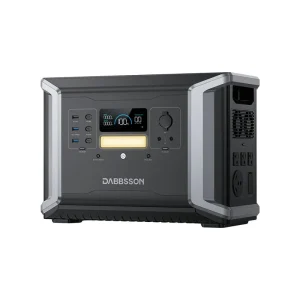A portable power station can charge your car, however, its ability to do so will depend on the grade of vehicle and how high capacity it is. Electric Vehicles (EVs) require much more, for obvious reasons. The output capacity of most portable power stations is between 500 and 2,000 watts but some high-end models such as the Dabbsson DBS1000Pro are rated for up to 1,000 watts. It can charge electric vehicle with such a power station, but the car may not be fully charged. For example, a standard electric vehicle requires between 30-50 kWh per full charge but portable power stations available store even less. In fitting hypermiler terms, while they might give you a range-boost in an emergency_, at most.
By comparison, workers need less power — many times 400 to 600 amps is all that's necessary for a portable power station to start an engine with a dead battery — to jump-start the system in traditional gasoline or diesel cars. Some power stations include jumper cables for prompt boosting. You will be able to quickly recharge a normal jump kit in less than 10 minutes, ensuring it is ready when you need it.

In addition to irrigation, portable power station are versatile for a variety of uses including recharging electronics and powering tools or medical devices in the great outdoors (or at least in the backyard) when you would otherwise be out of luck. That multi-functionality comes in handy, especially if you need power and find yourself off the grid quite often. A study in 2022 found that three out of every 10 customers buy portable power stations because they can also charge their cars, but the majority are really aiming for nothing more than a little campin' or an ability to get exactly zero blinks on the loaded-ice-cream-container-jigsaw misplaced and into cool storage.
Someone wise like Elon Musk once said, "Sustainable energy is the future." These portable power station are in line with this method as they supply pollution-free, battery-operated vitality without utilizing fossil fuels. Additionally, they are cleaner for the environment than gas-powered generators because they operate emissions-free and quietly.
While they work with some use cases (for example, to provide limited electrical boost on long-distance travel for electric cars or as a 'jump start' backup such as jump-starting a car), they are not designed, nor should be depended upon to serve as the primary car-charging solution for long-distance transit. But on a day to day basis, the everyday driver doesn't usually come equipped with these functions (especially being able to charge your vehicle via power station) so, in an emergency or quick get away could have you puchased one of DBS1000Pro's models that can deliver bargaining and multiple levels of assurance.